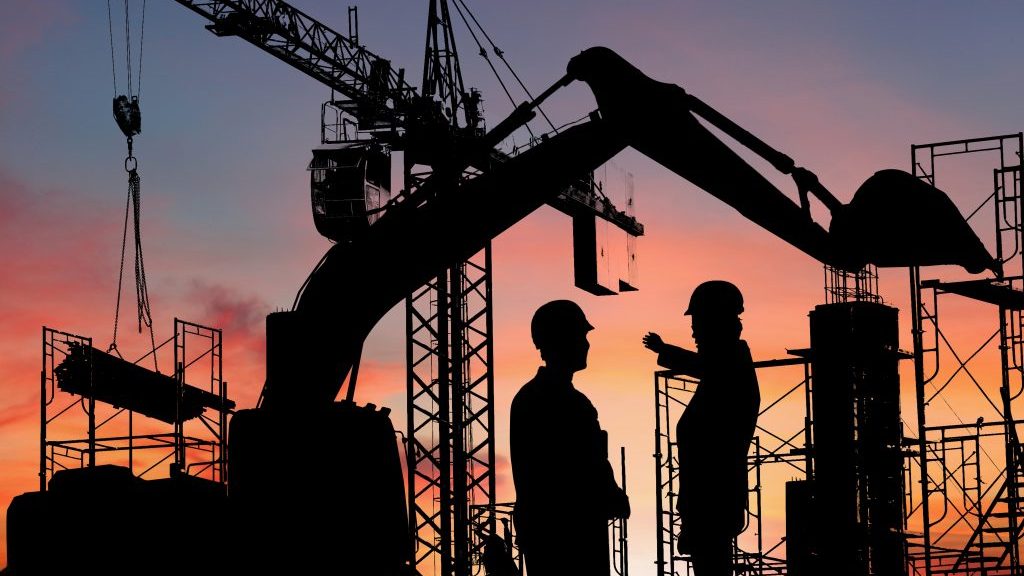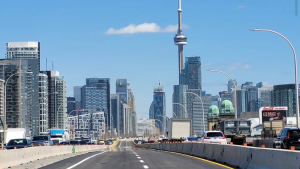Utilities along an 18-kilometre corridor that runs from Port Credit in the south to Brampton in the north have been successfully moved in preparation for the start of construction on the $4.6-billion Hurontario LRT.
All in, more than 28 kilometres of telecom cable and 22 kilometres of hydro cable along the corridor have now been removed or buried underground and 36 projects that entail gas line relocations are completed. Additionally, 5,473 metres of median were removed and 125 borehole investigations were completed.
“Although it was a very small component of the overall project, it nonetheless was delivered successfully,” explains Darshpreet Bhatti, vice-president, Hurontario LRT at Metrolinx. “We’re down to a handful of projects because pretty well the majority of the lines have now been moved out of the way.”
“Sometimes it’s not seen. When you’re a driver going along the corridor, you don’t notice but all that work happened in a short timeframe of a year-and-a-half.”
Indeed, the work proceeded as scheduled and Mobilinx, the consortium in charge of the project, will be turning its attention to beginning major work in 2021.
Like most design-build projects, the early days of the Hurontario LRT were focused on prep work and doing due diligence to ensure plans could be carried out as envisioned before putting the wheels in motion.
When completed in 2024, the LRT will have 19 stops and include an operations, maintenance and storage facility (OMASF) to be located at Highway 407. The LRT will run electric trains along Hurontario Street in a dedicated guideway. It is an integral part of the region’s integrated regional transportation network.
Work on the OMASF began last year. The 11,000-square-metre facility is on 23 hectares of land south of Highway 407 and west of Kennedy Road. Dubbed the brain of the system, it will have an operating centre that will control the LRT system and an area where the vehicles can be stored, maintained and washed.
The site for the OMASF has been levelled and graded and is set for erection of the steel-framed building. Mobilinx started work on the project earlier than anticipated.
“It’s a pretty aggressive move that our contractors have taken but so far it’s turning out to be very positive,” said Bhatti.
The consortium also got a head start on work in the area of Highway 407 where foundational columns have now been built for an overpass to support future road widening. Piers have been installed for a middle span.
Coincidentally, Dufferin Construction had won a contract to widen Highway 407 in the area of the LRT so Mobilinx worked with that company and operators of the highway to figure out the best way to also widen the overpass to accommodate two additional tracks for the LRT and accommodate the traffic configuration.
Mobilinx negotiated an arrangement with Dufferin to allow for additional piers to be built on the east and west sides of the bridge to support the wider deck.
“It’s a very complicated piece of engineering because once they’re done it will look like one bridge but technically it will be three separate bridges with one bridge for traffic on the east side, another bridge for LRT in the middle and then another bridge for traffic on the west side,” said Bhatti. “Visually, it will look like one.
“It was a very opportunistic step our contractor took. We were able to start very quickly in June of 2020 and finish the pier work by late September or early October.”
There’s still a lot more work to do in the Highway 407 corridor, including abutments on the north and sides of the crossing, but it will be more easily managed now that some of the work has already been done.
The actual LRT track will be in the middle of Hurontario so the road will be widened on the east and west sides. Boulevard elements will be built up and include poles to support the electrical lines for the vehicles. Nineteen stations and shelters will also be built along the route, along with sidewalks, trails and barriers.
Once completed, the LRT will provide a very strong north-south connection along a busy corridor as well as a link to various east-west transit systems.
“Hurontario was a perfect candidate for the LRT because it’s one of the highest corridors for people travelling between the two cities of Brampton and Mississauga but also within the region,” said Bhatti. “We’re connecting with potentially five major east-west higher order transit lines, such as the Lakeshore West Line at Port Credit, the Milton Line at Cooksville, and transitway at Square One Drive.”
Planning for the LRT project began 12 years ago and, while many different utilities, municipalities, provincial agencies, other groups and the public have been involved, Bhatti said problems have been avoided because good partnerships were developed over the years with cities along the route.
“Technically, there will always be challenges, but it’s how we can relate to our stakeholders to find a solution to move forward and that’s where most projects succeed or fail.”










Recent Comments
comments for this post are closed